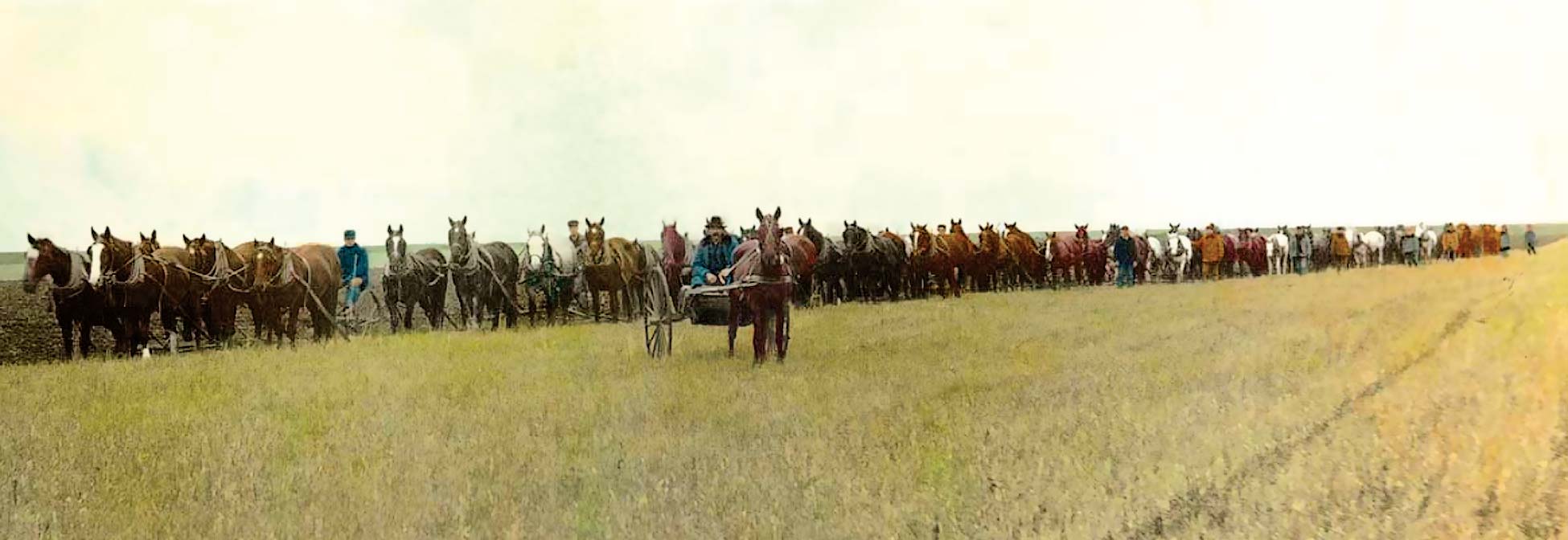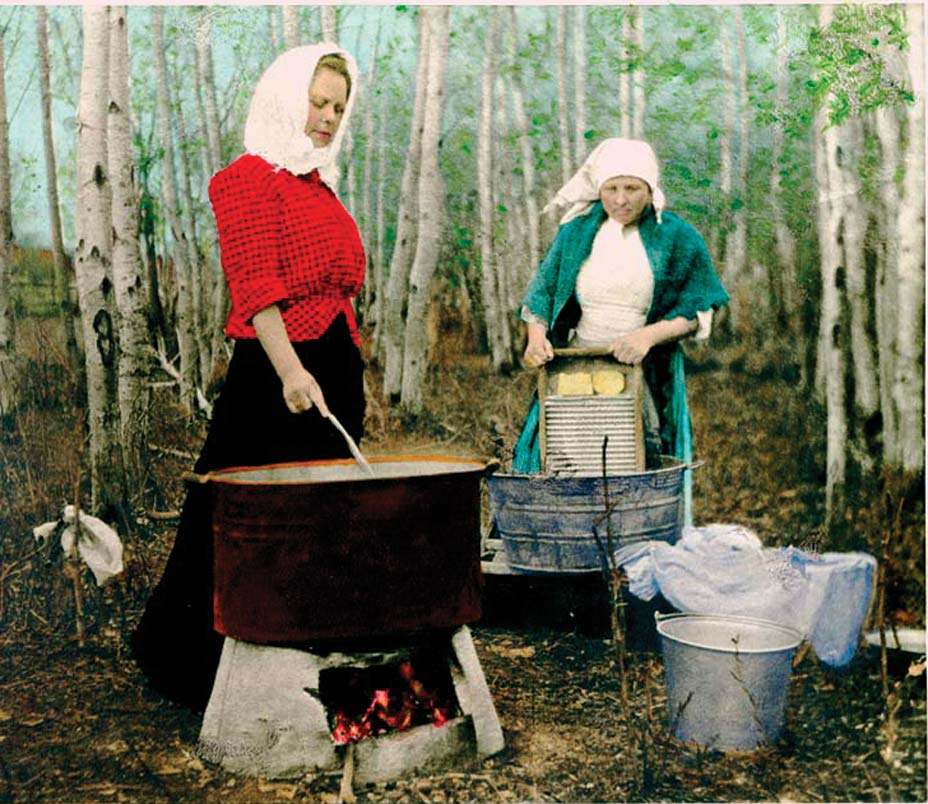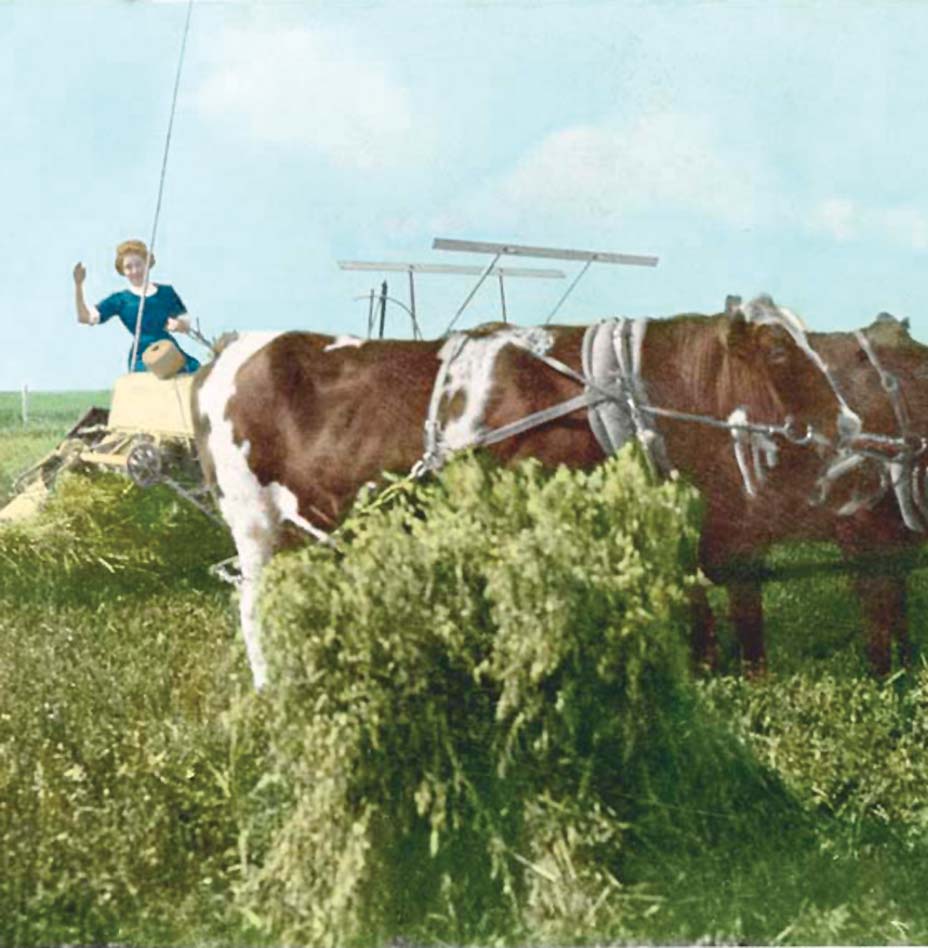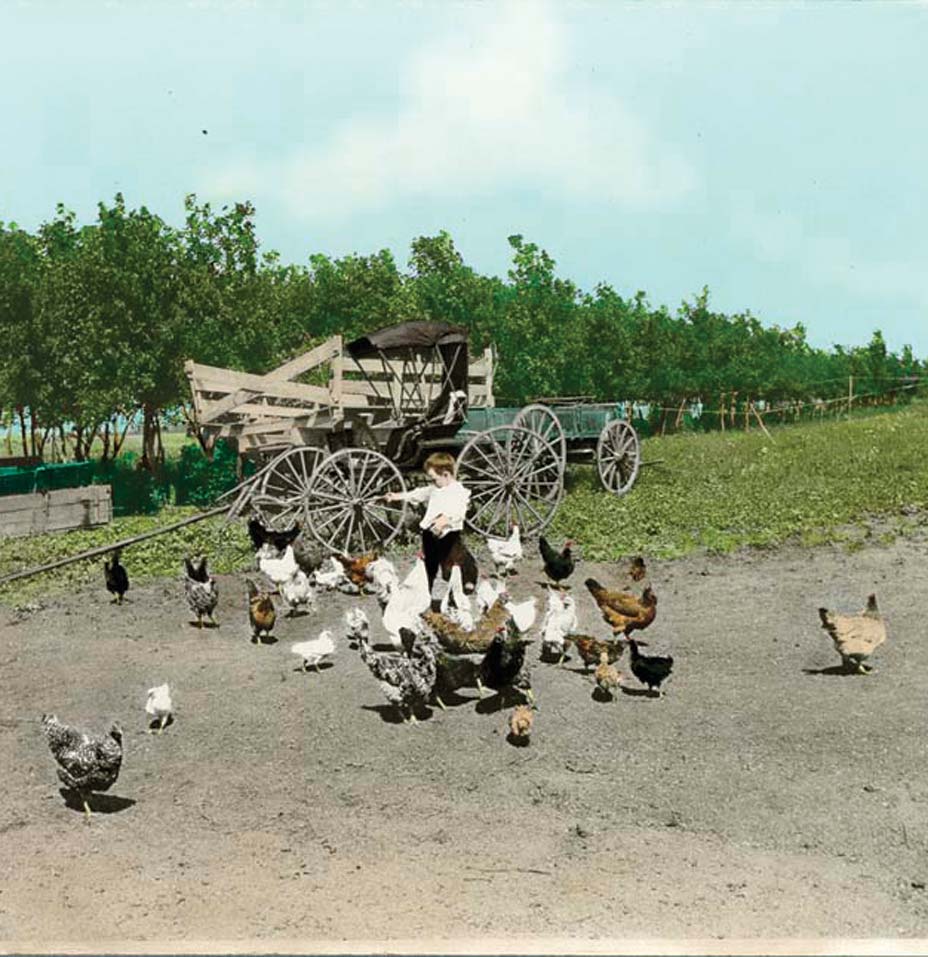In the cities of the eastern United States, men generally did “men’s work,” and women either did “women’s work” or else did not do anything that could be considered “work.” Children’s roles were often not considered to be important.
On the homesteading prairies of North Dakota, the roles of pioneer men, women, and children were often blended together so that everyone contributed equally to the success of the homestead. Men usually did the heaviest work because they were generally the strongest physically, but the women and children worked just as hard, carrying out significant responsibilities.
Breaking the sod and planting the first crop was generally a two-person job. Older boys helped out when they were available, but women and girls often worked in the fields as well.
During the first years on a homestead claim, people were often very short of money. A team of horses, equipment, and seed for planting were necessary items that needed to be purchased. The homesteaders also had to have food supplies to last several months.
In order to survive until the crops were planted, harvested, and sold at market, other sources of income were required. Many of the earliest homesteading families gathered wagonloads of bison bones, which they sold for $8 to $12 a ton. The bones were shipped to eastern markets, where they were made into fertilizer, glue, and other products.

Figure 95. Plowing on the Kingman Bonanza Farm, north of Hillsboro, North Dakota, about 1890. The plowing required 70 horses. (Hultstrand Collection, Institute for Regional Studies, NDSU, 2028.490)

Figure 96. Wash day on the homestead. (Hultstrand Collection, Institute for Regional Studies, NDSU, 2028.195)
Some of the men left the state to work in lumber camps; some worked on the railroad, and others hunted or trapped. While the men were gone, the women and children took care of the farmwork.
Women usually provided food and income by milking cows and raising poultryBirds raised for eggs or meat (birds raised for eggs or meat). Women and children churned butter and gathered eggs. These products were used not only by the family, but they could also be sold to neighbors or to a store or restaurant in town.
Cows had to be milked twice a day every day for most of the year. If butter was to be made, the milk first had to be “separated.” The milk could be allowed to “set” overnight, causing the cream to rise to the top, which was skimmed off. Some people had hand-cranked separators, which separated the cream from the skim milk.
To make butter, cream was placed in a churn.Device that stirred cream to make butter A common type of churn was a covered wooden container with a paddle turned by a hand crank. The paddle rapidly stirred the cream as a person turned the crank. This was a job often done by children who were strong enough to crank the churn.
Women made their own soap out of lye, animal fat, and rain water. Lye is a very harsh substance that burns away particles. The mixture had to be cooked for several hours, which caused people's eyes to water and gave off a bad smell. Just exactly the right amount of lye had to be added—too much and the soap burned the skin, or too little and the soap did not work.
Nearly every homesteading family raised garden vegetables that were canned each fall. Meat was also canned after an animal was butchered. The canning process involved picking, cleaning, and cutting up the vegetables or preparing the meat, sterilizing the jars in boiling water, packing the jars, and heating the product by a certain method. The canning process had to be done exactly right to avoid food poisoning or spoilage. Usually canning was done by the women, but sometimes it involved the whole family.
Sewing, knitting, and mending were important jobs done mostly by the women and girls. Many pioneer women made the clothes for the family. Most pioneer women owned a sewing machine that had a hand crank or was powered by a foot treadle (Tred-al). Girls learned how to sew at a young age. If an article of clothing ripped or was wearing out, it would be patched or mended.
Clothing was also “handed down.” As an older child outgrew an article of clothing, it was handed down to the next child. It was not uncommon for a piece of clothing to be handed down three or four times to younger siblings.
Many bachelors (unmarried men) who were homesteading learned to do tasks they previously had not thought about doing themselves. Cooking, doing laundry, and mending clothes were jobs that many of the men learned to do when they were living by themselves.

Figure 97. Women did their share of work on the early homesteads. (Hultstrand Collection, Institute for Regional Studies, NDSU, 2028.183)
Thousands of women led homestead claims in North Dakota on their own. Most were young, single women, but older women also led claims. Women who homesteaded became independent very quickly. It was common for pioneer women to handle horses, operate machinery, and work in the fields.
Frequently, single women worked at other jobs, particularly during the winters. Some were teachers who either held classes in their homes or traveled to schoolhouses some miles away. Other jobs away from home included working as a clerk in a store, cooking or serving in a restaurant, doing housekeeping, and operating a dress or hat shop in town.
Often the first job that a young immigrant woman had was working as a “hired girl.” A hired girl lived with the family she worked for, helping the woman of the house with cooking, cleaning, taking care of children, and doing other chores.
The women and men from neighboring homesteads often exchanged work, and neighbors were always ready to help other neighbors in time of need. Many of the single men and women ended up marrying each other, but they often waited until after one or both of them had “proved up.”
Many of the pioneer settlers were made up of families with children. Every family member shared in the work, and children took on responsibilities at a very young age. As soon as a child was old enough to follow directions, he or she became responsible for certain tasks. Chores were based on age and strength.

Figure 98. Children had their responsibilities. This young boy has the job of feeding the chickens. (Hultstrand Collection, Institute for Regional Studies, NDSU, 2028.213)
Babysitting younger siblings (brothers and sisters), picking eggs, feeding chickens, herding cattle, and helping with jobs around the house were some of the earliest chores children had. As they grew older and stronger, children gradually increased their work loads.
By the time a child reached the age of 10, he or she was usually considered capable of taking on many adult responsibilities. It was common for children to drive horses and operate farm machinery. The more a child could do alone, the more important he or she felt.
Farm children were not the only pioneer children whose work was necessary to help support the family. Children whose parents worked in town also had their responsibilities.
Marguerite Ferguson’s parents owned a hotel in Grandin. After Marguerite finished the third grade, she dropped out of school to work full-time at the hotel. Working as a server in the hotel’s restaurant and cleaning the guest rooms were two of her jobs. At the age of 10, it was Marguerite’s responsibility to make the 30-mile train trip to Fargo every week to buy groceries for the hotel’s restaurant.


